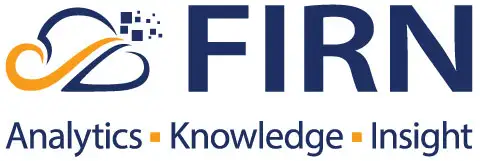Driving innovation in the personal loan market

Harmoney is an award-winning online lending platform providing New Zealanders and Australians with competitive interest rates for their personal loans.
But that’s not the only thing that sets them apart from traditional banks and lending institutions.
Rather than requiring people to decide who is worthy of a loan, they use ‘technology, science, and mountains of data’ to help make these decisions – and do it better and faster.
To achieve this, they needed the right technology stack. Technology that allowed them to store and access decision-making data, using it to help improve the customer experience and inject more fairness into loan approvals.
The Challenge
Like many companies, Harmoney started off their journey with technology and tools that were appropriate for their beginnings. As they grew, these legacy systems struggled to keep up. They quickly identified three areas in which they needed to upgrade or introduce new technology.
One of their first requirements was the ability to quickly and easily deploy machine-learning models into business operations. These models were created to ease the application process for the customer. They required fewer questions and enabling a faster approval time. However, the environment where they developed their models and the environment in which they deployed them weren’t integrated. This made the process difficult and repetitive as they had to re-test every model once it was in the production environment.
They also discovered that they needed to upgrade their data warehouse. The Microsoft SQL Server Harmoney was using wasn’t allowing them to easily access and use their data to help improve the lending experience. Instead, it was time-consuming and didn’t allow for the near real-time insights that they wanted.
Finally, they needed a platform where they could easily access, visualise, interpret, and share data across the organisation. They wanted to ensure business decisions were informed by data, rather than assumptions. Using Excel or even SAS visualisation meant this process was manual. The data was only updated once a day, meaning they weren’t able to make decisions based on the most up-to-date information.
The Solution
Harmoney knew there had to be a better way to deploy the right solutions for each of the roadblocks they encountered. They knew they needed the solutions to be cloud-native, cost-effective, easy to use, and scalable. And they wanted the systems to easily integrate with each other to streamline the exchange of data and optimise both lending application processes and business operations.
To improve their model deployment process, Harmoney’s data scientists knew they needed a single integrated environment that would support both model development and deployment. When they discovered DataRobot and learned that it could be shared by both their data science and IT engineering teams as a means to create great models and to accelerate their deployment into the operational system; they were sold. In fact, once they realised just how closely DataRobot fit their requirements, they knew their search was over.
For the data warehouse, on FIRN Analytics’ recommendation, Harmoney chose Snowflake. Its cloud-based architecture, elasticity, and ability to store vast amounts of different data types gave Harmoney the scalability and flexibility they needed to meet their fluctuating analytic workload and allow them to respond quickly to change.
At the same time Harmoney implemented Snowflake, they again turned to FIRN. Our team helped them identify and also implement Tableau as their cloud-based analytics programme. Natively integrated with both Snowflake and DataRobot, this means they are able to gather insights to make informed business decisions based on near real-time data. One of the main selling points was also the fact that it was easy to use. Even by non-data scientists or engineers, meaning it could be used by every part of the organisation to monitor their performance and see how they are contributing to the sales funnel.
The Result
For Harmoney, implementing these cloud-based systems wasn’t just to help improve internal business processes, but also to improve the customer experience. Implementing DataRobot, Snowflake, and Tableau has allowed Harmoney to automate internal processes. For example, deploying new machine learning models, and discovering insights faster than they were able to before.
This, in turn, means that when they identify an opportunity to improve the customer experience, like requiring fewer questions on the application form, or being able to provide a fairer interest rate based on previous lending behaviour, or their credit rating, they are able to generate and deploy a solution faster. And, as they’re making these decisions based on near real-time data, they’re able to optimise processes based on what’s happening now, rather than what was happening a few days ago.
Having the right technology in place has always been important to Harmoney. It enables their people to do what they’re best at – improving the customer experience. The combination of DataRobot, Snowflake, and Tableau has allowed them to automate previously manual tasks and remove additional steps, and they now have more time to focus on the roadblocks a customer might encounter, and building the solution to fix it.
“The growth we’ve seen over the past two years just wouldn’t have been possible without these systems and their ability to seamlessly work together.”
Miles Davis, BI Manager


